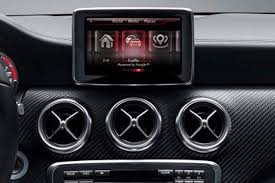Digital technology is improving auto performance, safety, and navigation capabilities. The following features are either already available in today’s new cars or will be rolled out over the next year or two. If you’re in the market for a new car, you’ll want to keep an eye out for these features to enhance your driving experience.
1. 3-D Navigation Systems
If you take a look at the latest models from Carsales and other listings websites, you’ll see that many new cars come already outfitted with basic satellite navigation. Yet the next generation of satellite navigation technology will be even more complex than before, giving you three-dimensional views of your overall route. This helps drivers keep closer tabs on traffic situations and view alternative routes to avoid pileups. Navigation systems will become part of a wireless network, utilising car-to-car communication to prevent traffic jams and accidents. Satellite navigation systems will not only be three-dimensional, but will also be updated in real time.
2. Auto Valet
Do you have trouble with parallel parking in tight spaces? Another digital feature to watch for is auto valet or automatic parking. Cars will be able to use satellite images to guide the car into parking spaces, using a combination of sensors and cameras. Audi and Volvo have both been hard at work on autonomous vehicle technology, so you can expect to see this feature in the most current Audi at carsales.com.au. In the near future with the Audi Connect App, you will be able to drive your A7 into the garage using your smartphone alone. This uses a combination of laser scanners in the parking garage along with the car’s embedded Wi-Fi connection.
3. Wireless Connectivity
Many of these digital features will rely on wireless connectivity within the car. The new crop of digital cars will come equipped with mobile wireless internet service providers, essentially turning the car itself into a hotspot. This will allow the car to provide a seamless internet connection even at high speeds. As a result, passengers will be able to do everything from check their email to connect with roadside sensors for added safety.
4. Pedestrian Detection
Volvo has developed a new pedestrian and cyclist detection system which works electronically to help prevent collisions. This system consists of a radar unit embedded in the car’s front grille, along with cameras and a centralised control unit. The radar helps detect objects and figure out their distance to the car, while the camera is trained to recognise the type of object ahead. This is designed to detect cyclists or pedestrians from a safe distance, and apply an automatic braking system if necessary to avoid collision.
5. Voice Recognition
There have been concerns about the effect these added features will have on driver safety. With so many new technological features, there’s a worry that it will be easier for the driver to become distracted. As a result, automakers are striving to safeguard the car by developing hands-free voice recognition systems. For example, Microsoft’s new Sync system proposes to connect mp3 devices and smartphones with the car’s computer, allowing all of these devices to be activated with driver voice commands.
You can expect the car of the future to become increasingly connected, autonomous, and responsive to all of your driving needs as a result.

